 |
The
Town of Darwen
in the County of
-- Lancashire --
|
 |
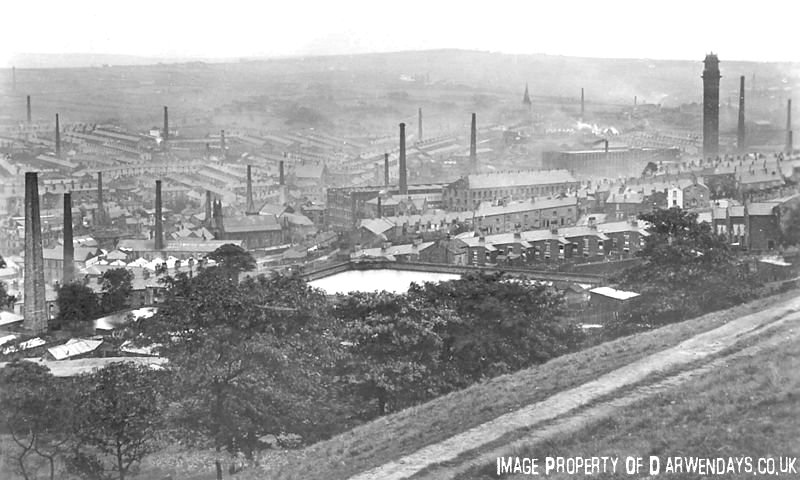
View over Darwen c.1900
Amid the West Pennine Moors is the town of Darwen, known locally as ‘Darren’, a market town a couple of miles South of Blackburn and about 9 miles north of Bolton. The boundary between Darwen and Blackburn is now difficult to determine as the land between the two towns is completely built up. The two towns now form the Borough of Blackburn with Darwen and are a Unitary Authority. The municipal borough of Darwen existed from 1878 to 1974 when it was merged with Blackburn under the Local Government Act of 1972. At its height in 1911 the population of Darwen was about 40,000, but as the cotton industry declined the population was around the 30,000 mark in 1971.
Over Darwen and Lower Darwen were once two separate small towns. In 1878 the Borough of Over Darwen was formed and a year later proposals were made to extend the boundaries and improve the river, the streets and the cemetery and to build a town hall and market house. However the new boundary suggestions were met with serious opposition, particularly from the Factory owners in Lower Darwen, and after several months of negotiations a compromise was reached whereby portions of Lower Darwen be included in the new borough of Over Darwen and the remainder be added to the Borough of Blackburn. In 1887 the corporation made a successful application to alter the name of the Borough from Over Darwen to Darwen.
The River Darwen, from which the town took its name, runs under the centre of the town, being visible only on the outskirts, and subsequently joins the River Ribble. The main road through the Town is the A666 which runs from the Ribble Valley, north of Blackburn, to Salford, Manchester.
Evidence has been unearthed that the area was inhabited during the Bronze Age, approximately 2000 BC, when a Barrow in the Whitehall area was discovered and artefacts including a bronze dagger and urns containing human ashes were found. Evidence relating to the Romans has also been discovered, including a Roman road. Darwen was no more than a village until the advent of the Industrial Revolution. As in many other Lancashire towns, it was a centre for textile manufacturing and the inventor of the spinning mule, Samuel Crompton, lived there for part of his life. Trade flourished with the arrival of the Rail link and the Leeds and Liverpool Canal. Because of the high rainfall the weather conditions also made it perfect for the weaving of cotton as the damp atmosphere helped prevent the threads breaking.
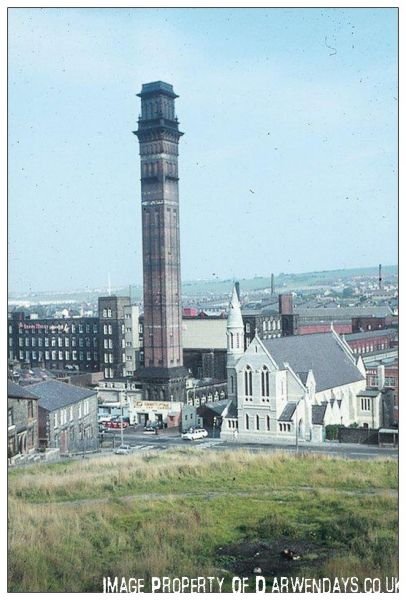
The most important textile building is India Mill, now converted into engineering works and offices. A huge six storey building, it was erected by Eccles Shorrock and Co. but suffered badly during the cotton famine of the 1860s and as a consequence Eccles Shorrock went bankrupt. The mill boasts an Italian style Grade II listed Chimney some 289 feet high, the largest in the country. At one time it was topped by a cast iron crown taking it beyond 300 feet, but this was removed during the drive for scrap metal in the War. After Shorrocks’ bankruptcy another company was formed which ran the spinning mill for many years. In 1954 it became part of the William Baird Textile Group who added a major extension in 1968/70. In 1974 the building was purchased by Carrington Viyella but finally closed as a textile business in 1991. In 1993 the building was taken over and magnificently restored by Brookhouse Holdings Ltd. who not only ran their own business there but created office space for many companies including the Capita Group who run the TV licensing department.
Darwen’s chief industries have been the cotton industry, collieries, stone and flag quarries, brickworks, engineering, paper making and the manufacture of wallpaper and paint. Paper making led to the establishment of the Anaglypta Co. Ltd. for the manufacture of Lincrust and Anaglypta wall coverings, and Crown Wallpaper, but this business was sold off some years ago and its huge factory in Bolton Road demolished. The site is now a housing estate. Crown Paints or WalPaMur (a name taken from the title Wall Paper Manufacturing Co.) still operate in Darwen. ICI Acrylics, now called Lucite International, also has extensive premises in the Town.
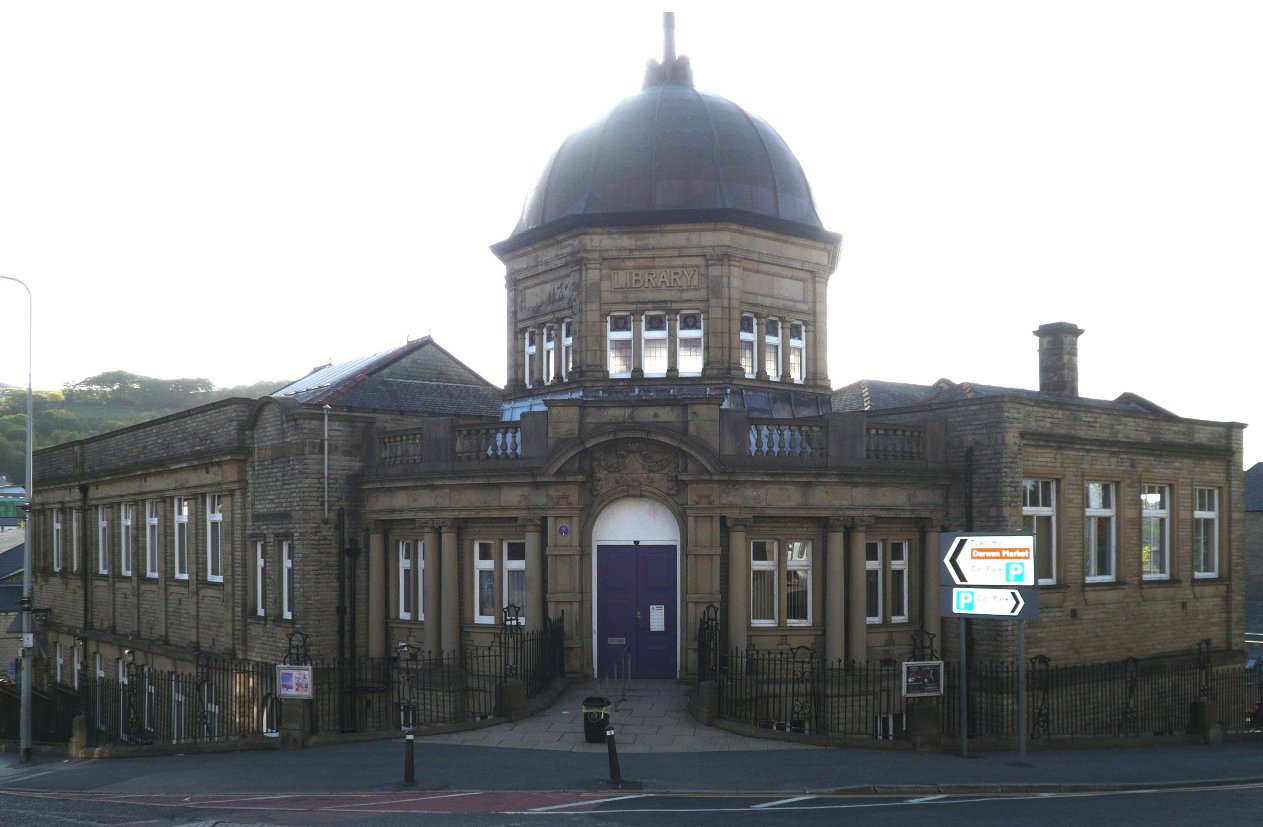
There are several ancient houses dating from the mid 17C and 18C but much of the housing was built between 1850 and 1900 when terraced housing was erected to accommodate the hundreds of factory workers. The Town also has a fine library, financed by Andrew Carnegie who was in attendance at its opening in 1907, a Town Hall and Market complex, an old Technology College which has recently been converted into flats and dozens of chapels, many of which are now used for commercial purposes. The Town Hall was opened in July 1882 and the clock tower added in 1899.
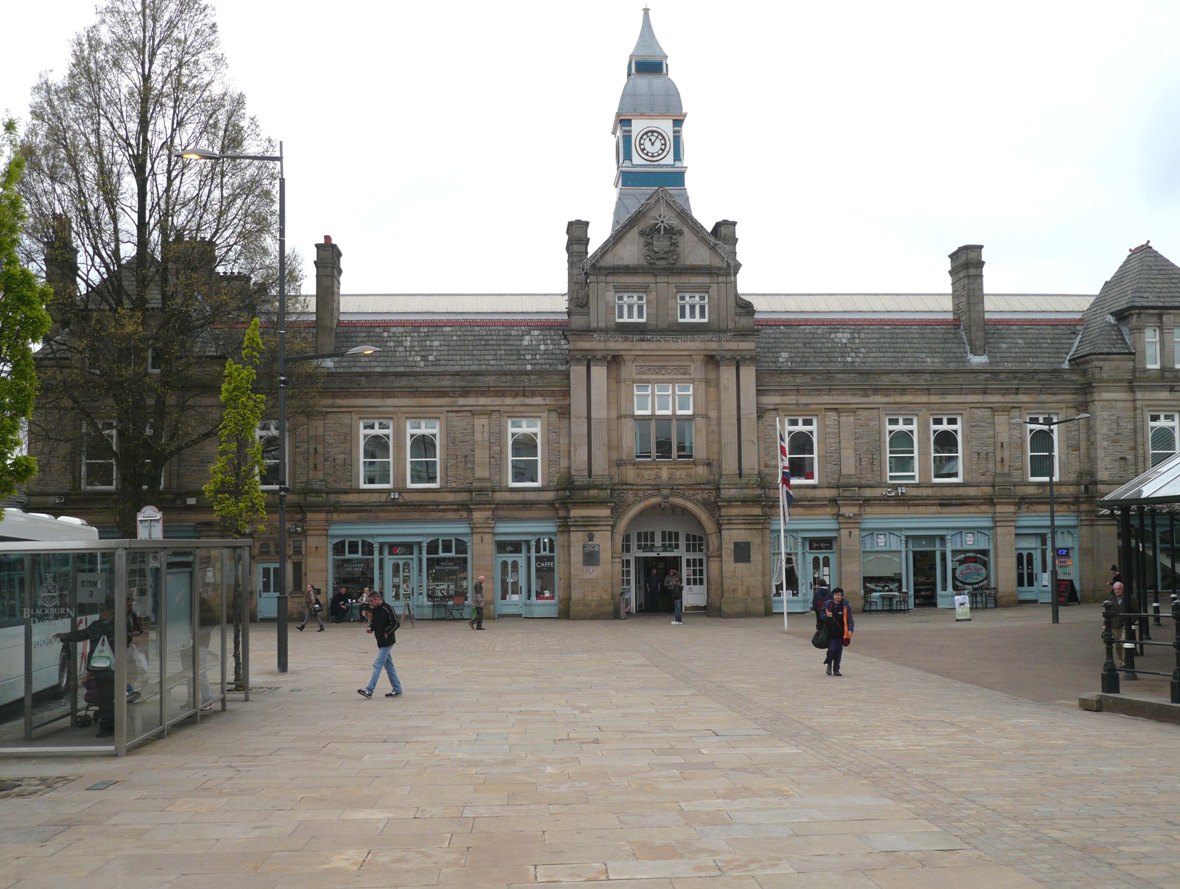
A 3 day open market was held on the square in front of the building but in the 1930s the town’s bus station was sited there and remains as such today. The 3 day market is now accommodated in a purpose built structure at the side of the square. The Town Hall houses offices connected with the Blackburn with Darwen Council and from 1983 accommodated the Magistrates’ Court in the old Council Chamber, but this was incorporated into the Blackburn Court system in 1992.
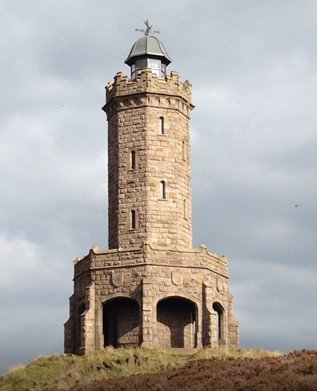
To celebrate the Diamond Jubilee of Queen Victoria a tower was built on the moors overlooking the town which can be seen for miles around. It is 86 feet high with an internal spiral staircase leading to its top. On a clear day it is possible to see Blackpool Tower, the Isle of Man and the hills of the Lake District and North Wales. Due to its location and the weather conditions on the moors the tower has been renovated on several of occasions, the strong winds having blown off the dome at the top. This last happened in November 2010 and has since been replaced thanks to WEC Group of Darwen who made and donated a powder coated stainless dome which had to be winched into place by helicopter.
The M65 motorway opened in 1997 and since then many businesses have been attracted to the area with industrial estates growing fast and a motorway service area being built at Junction 4. The Town tries hard to keep its own identity from being swallowed up by Blackburn and was successful in having the Service Station renamed Blackburn with Darwen Service Station instead of just Blackburn Service Station.
St Peter’s Church in the centre of Darwen is the largest active Anglican church but St James’ on the edge of the town is the oldest. As the Town expanded more churches were built for the convenience of the population, but Darwen was noted as a stronghold of nonconformity and this can be seen by the number of chapels still in existence today. Between the Act of Uniformity of 1662 and the Act of Indulgence in 1687 Nonconformist Ministers suffered great hardships and congregations met in secret. However, Lower Chapel was the first recognised Nonconformist place of worship in Darwen, with the exception of a house belonging to William and Henry Berry which had been licensed in 1672 as a Preaching meeting place, but the license withdrawn in 1673.
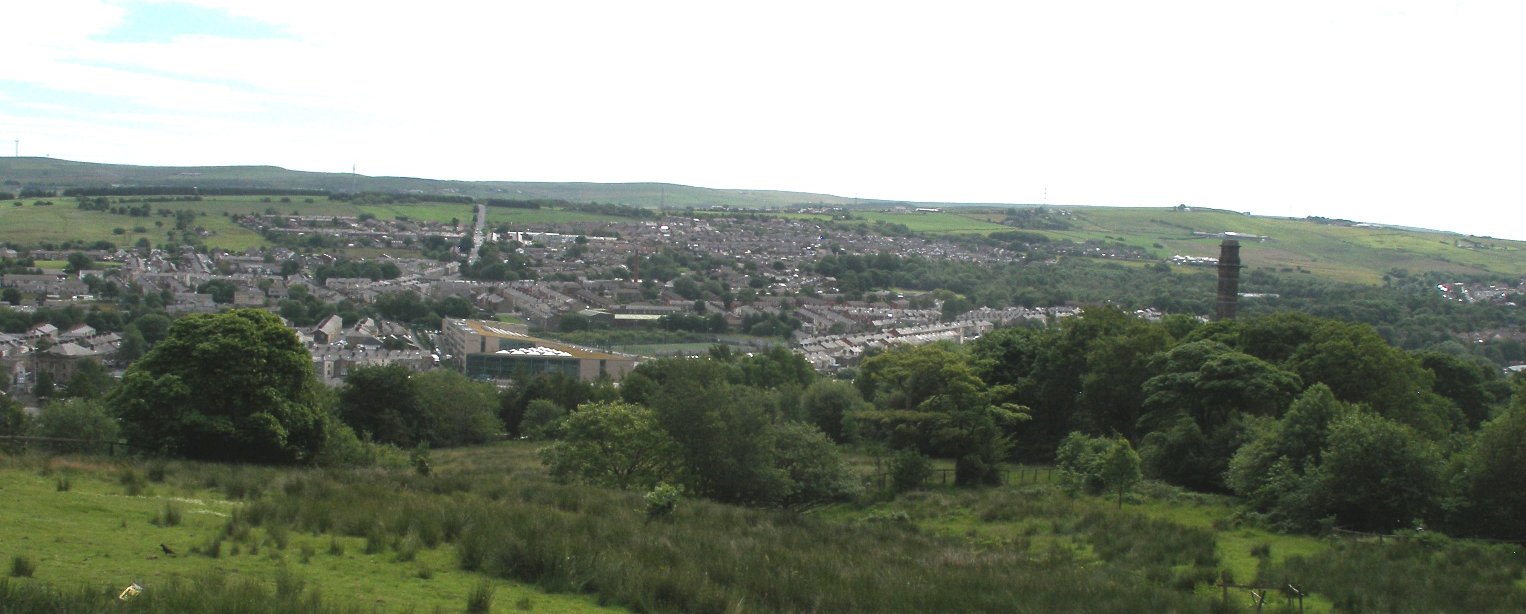
View over Darwen 2015
Bibliography for church information:-
Abram’s History of Blackburn Town and Parish
Darwen and Its People by J. G. Shaw
Lancashire Nonconformity by Rev. B. Nightingale
Barrett’s Directory of Blackburn and District for 1947
The Darwen Year Book
Redearth Road Methodist Church War Memorial booklet by Tony Foster
A Walk with God by Geoffrey Yates (The Story of the Central U.R.C.)
Mr. Gordon Holden, Retired Borough Architect
History of Grimehills Mission Church
History of Bolton Road U.R.C. The First 100 Years 1883-1983
Darwen Days web site
Many thanks to Darwen Days for allowing us the use of some of their photographs on this and on the individual Church Pages.
More photographs of the Town and its places of worship can be found on the
Darwen Days website.







